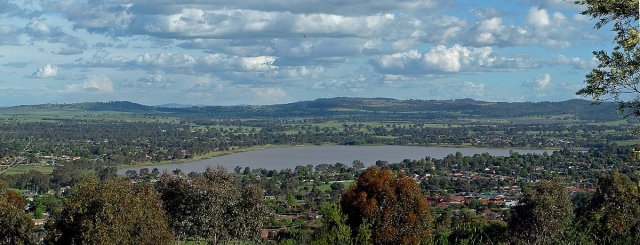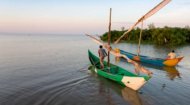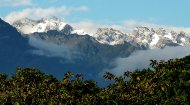
|
Lake Albert Guide |
Lake Albert Guide |
Lake Albert Guide | Lake Albert Guide |
Finds more things to do and tourist attractions in Fort Portal in our Fort Portal profile pages.
More >
|
|

Lake Albert's ecosystem is one of great biodiversity, teeming with an incredible array of wildlife both within its waters and along its shores. Its depths are home to a rich variety of fish, including the Nile tilapia, Nile barb and Giraffe catfish, forming the base of a complex food web. Above the water, the skies and wetlands are filled with avian life; iconic birds such as the prehistoric-looking shoebill stork, various species of kingfishers, herons, and egrets find sanctuary there, making it a paradise for birdwatchers. Mammals include hippopotamuses, Ugandan kob, red, as well as Nile lechwe, the African softshell turtle, Central African mud turtle, Nile monitor lizard and Williams' mud turtle, as well as giant Ugandan bullfrogs. The lake is also a habitat for Nile crocodiles, underscoring the lake's role as a critical habitat that supports a delicate balance of species. This tapestry is intrinsically linked to the broader Albertine Rift Valley, recognised globally as one of Africa's most biodiverse regions. For visitors, Lake Albert offers a diverse array of activities that promise both adventure and tranquillity. Fishing, particularly for the prized Nile perch and various species of tilapia and catfish, remains a popular pursuit, attracting both commercial fishermen and sport anglers eager to test their skills against the lake's abundant aquatic life. Beyond fishing, scenic boat trips provide an unparalleled opportunity to cruise its calm waters, witness breath-taking sunsets, and observe the prolific birdlife that congregates along its reedy edges. Many visitors combine their lake experience with a safari in the nearby Murchison Falls National Park, where the Albert Nile dramatically plunges over the Rift Valley Escarpment, offering a spectacular culmination to a journey of natural wonder. Despite its ecological importance, Lake Albert faces considerable conservation challenges that threaten its long-term health and the livelihoods of its dependent communities. Overfishing, driven by increasing population demands and unsustainable practices, depletes fish stocks at an alarming rate. Pollution originating from agricultural runoff, plastic waste, and inadequate waste management from burgeoning urban centres and, potentially, from nascent oil exploration activities, degrades water quality and impacts aquatic life. Climate change, with its unpredictable patterns of rainfall and temperature, also poses a significant threat, altering water levels and ecosystem dynamics. Addressing these issues has given rise to concerted efforts, involving local communities, government agencies, and international organisations, to implement sustainable fishing policies, promote eco-friendly practices, and protect critical habitats. Although a large lake, there are no major towns on its shores on the lake's Ugandan side; however, a relatively small population live in nearby villages, with Buliisa being the largest town at the north end of Lake Albert with a population of some 30,000. If you have further information to add to this Lake Albert guide, whether it be reviews, places of interest or accommodation, contact us using our contact form. Now check out the main tourist attractions in the park in the above video. |








